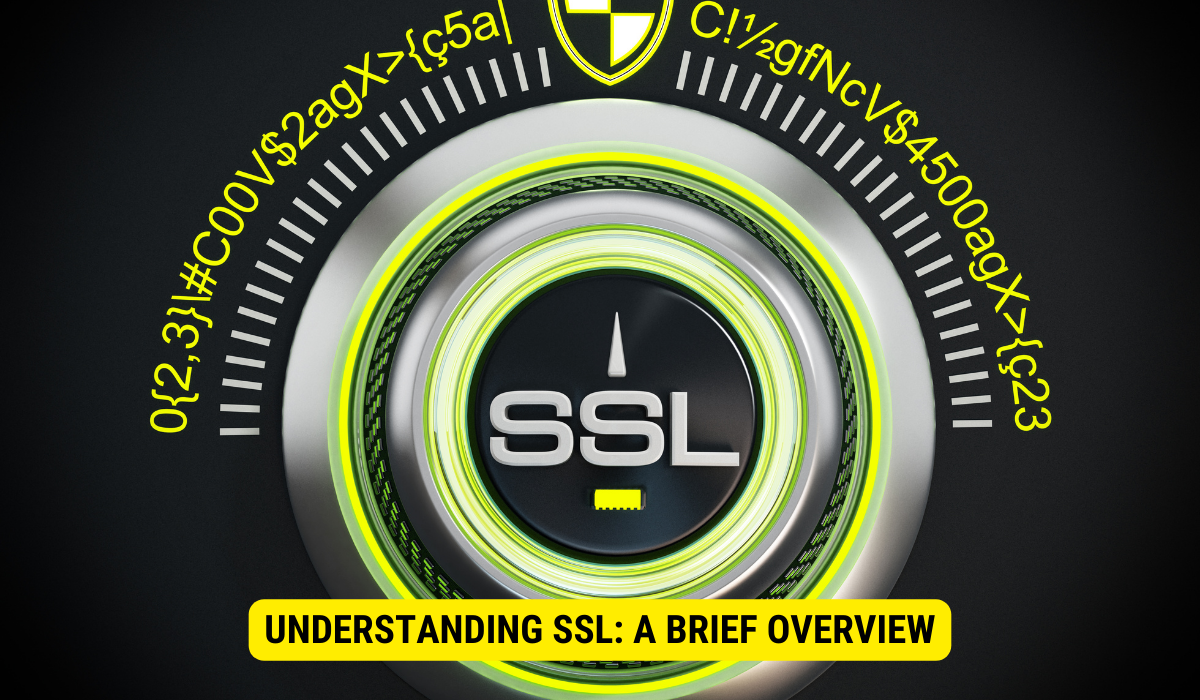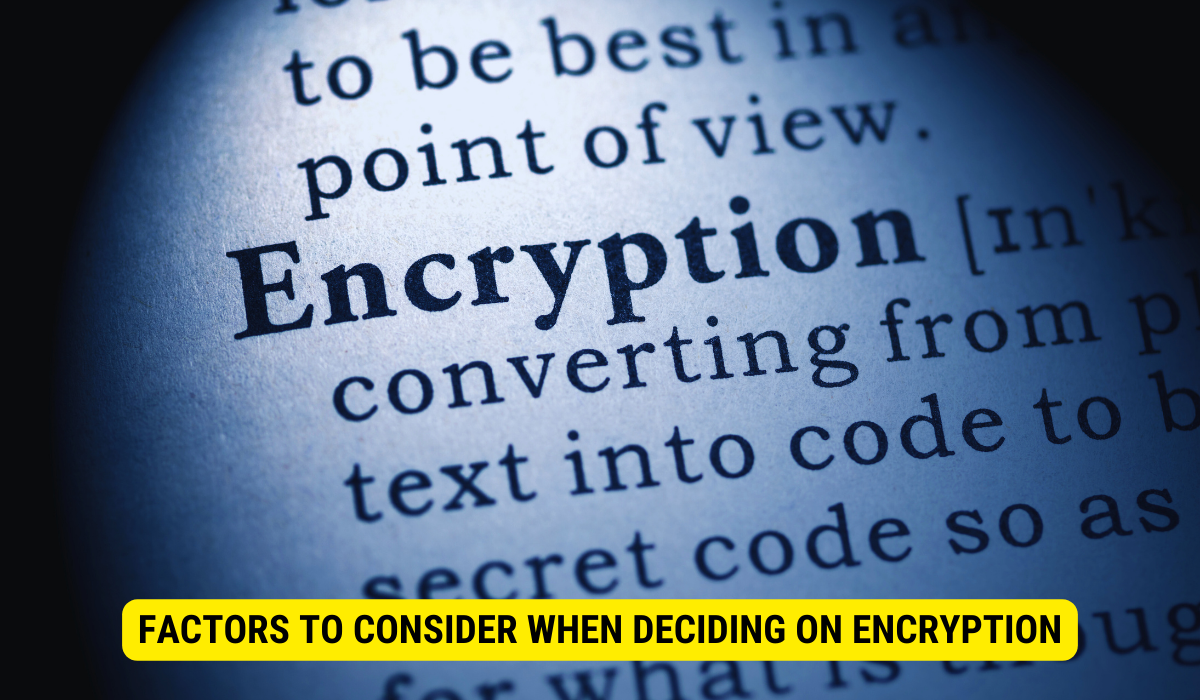Whether you should encrypt data when using SSL depends on several factors, such as the sensitivity of your data, your industry, and any regulatory requirements. While SSL provides robust security during data transmission, additional encryption might be needed for comprehensive data protection based on your specific situation.
Data security has become a top priority for individuals and organizations in today’s digital age. With the increase in cyber threats and data breaches, protecting sensitive information when transmitted across the internet is crucial. One commonly used security measure is the Secure Sockets Layer (SSL) protocol. But should you rely solely on SSL encryption or consider adding an extra layer of data encryption? Let’s explore the topic further to help you make an informed decision.
Understanding SSL: A Brief Overview

Before diving into encryption, let’s first understand what SSL is and how it works. SSL, now more commonly known as transport Layer Security (TLS), is a security protocol designed to create a secure, encrypted connection among a web server and a web browser. This encryption ensures that any data transmitted among them remains private and protected from eavesdropping.
But what exactly happens during an SSL connection? Let’s find out.
What is SSL?
SSL (Secure Sockets Layer) is a cryptographic protocol that uses a combination of public key encryption and symmetric key encryption. It allows secure communication over the internet by authenticating the server’s identity and providing confidentiality and integrity of the transmitted data. SSL certificates, issued by trusted Certificate Authorities, validate the ownership of the website and establish a secure connection between the server and the operator’s browser.
SSL certificates play a crucial role in confirming the security of online transactions. They contain information about the website owner, such as their domain name, organization name, and location. The Certificate Authority verifies this information before issuing the certificate. Once installed on the server, the SSL certificate acts as a digital passport, assuring users that they connect to the legitimate website.
Additionally, SSL certificates enable HTTPS (Hypertext Transfer Protocol Secure), the secure version of HTTP. When a website uses HTTPS, the data exchanged between the server and the browser the data is encrypted, rendering it highly challenging for unauthorized individuals to intercept and decode.
How Does SSL Work?
When a user initiates an SSL connection to a website, the server presents a digital certificate that contains its public key. The user’s browser verifies the certificate’s authenticity and Utilizes the public key of the server to perform encryption casual symmetric encryption key. This symmetric key is subsequently transmitted to the server, where it is decrypted using the server’s private key. The server and browser can now use this shared symmetric key to encrypt and decrypt further data during the session, ensuring its confidentiality and integrity.
During the SSL handshake process, the server and browser also negotiate the session’s encryption algorithm and cryptographic parameters. This ensures that both parties agree on a secure method of communication. The SSL handshake is crucial in establishing a secure connection and is performed transparently by the user.
Once the SSL connection is established, all data transmitted among the server and the browser is encrypted and decrypted using the shared symmetric key. This ensures that even if an attacker intercepts the data, it will be unreadable without the symmetric key.
Furthermore, SSL also provides a mechanism for verifying the integrity of the transmitted data. Each data packet is encrypted and accompanied by a message authentication code (MAC) that ensures the data has not been tampered with during transmission.
In conclusion, SSL is a vital component of secure internet communication. It encrypts the data exchanged between a web server and a web browser and verifies the server’s authenticity. By implementing SSL, websites can protect sensitive info, such as passwords, credit card details, and individual data, from unauthorized access and ensure a safe user browsing experience.
The Importance of Data Encryption

Now that we understand SSL better, it’s essential to acknowledge the role of encryption in data security. Encryption transforms data into an unreadable format known as ciphertext, making it unintelligible to unauthorized individuals. This ensures that even if the encrypted data is intercepted, it remains inaccessible without the encryption key.
Data encryption is vital in safeguarding sensitive information, such as financial details, personal data, and business secrets. It adds an extra layer of protection, reducing the risk of unauthorized entry and potential data breaches.
But what exactly is encryption, and how does it work? Encryption is a procedure that uses mathematical algorithms to change plaintext data into an encoded form. The resulting ciphertext can only be deciphered back into its original form using the encryption key. This means that even if someone gains entree to the encrypted data, they won’t understand it without the key.
Encryption is pivotal in protecting data at rest, in transit, and in use. While SSL primarily focuses on securing data during transmission, additional encryption can ensure the confidentiality of stored data and protect it from unauthorized access. Establishments dealing with highly sensitive information, such as healthcare providers or financial institutions, may have legal or regulatory obligations to implement encryption beyond SSL.
The Role of Encryption in Data Security
Regarding data security, encryption acts as a powerful shield against potential threats. It not only prevents unauthorized access but also safeguards the integrity and authenticity of the data. Encryption ensures that any changes made to the encrypted data can be detected, as the decryption process will fail if the data has been tampered with.
Furthermore, encryption provides a means of verifying the sender’s identity and the message’s integrity. By using digital signatures, encryption can guarantee that the data originates from a trusted source and has not been modified during transmission.
It’s worth noting that encryption is not a one-size-fits-all solution. Different encryption algorithms offer varying levels of security. Some algorithms, such as the Advanced Encryption Standard (AES), are widely recognized as highly secure and are commonly used to protect sensitive information. AES-256, for example, uses a 256-bit key, making it extremely difficult to crack.
Different Levels of Data Encryption
When considering additional encryption options, it’s essential to assess the level of security required for your data. Encryption algorithms vary in complexity and strength, with some being more robust than others. Advanced encryption methods, such as AES-256, offer a higher level of security and are widely adopted for protecting sensitive information. Choosing encryption methods and key lengths that align with industry best practices and your specific security requirements is crucial.
In addition to the encryption algorithm, the length of the encryption key also plays a significant role in determining the level of security. Longer keys provide a higher level of protection against brute-force attacks, as more possible combinations exist. For example, a 128-bit key offers 2^128 combinations, making it extremely difficult to crack.
It’s important to stay updated with the newest advancements in encryption technology, as encryption algorithms can become vulnerable over time. Regularly reviewing and updating your encryption methods ensures your data remains secure against emerging threats.
SSL and Data Encryption: The Connection
Let’s examine how SSL and data encryption work together to provide a comprehensive security solution.
How SSL Uses Encryption?
SSL incorporates encryption as a fundamental component to secure data during transmission. By encrypting all data exchanged between the server and the user’s browser, SSL ensures that the information remains incomprehensible even if intercepted without the corresponding decryption key.
SSL encryption primarily protects against eavesdropping and tampering while the data is transmitted. It ensures the confidentiality and integrity of the information, making it nearly impossible for attackers to decipher the encrypted data.
The Limitations of SSL Encryption
While SSL encryption provides a robust level of security during data transmission, it does have certain limitations. SSL does not protect against data breaches that occur either before or after the transmission. Data at rest on the server or accessed by authorized personnel may still be vulnerable if proper security measures are not in place. This is where additional encryption measures can come into play to safeguard your data further.
To Encrypt or Not to Encrypt: The Debate
When deciding whether to add an extra layer of encryption to your SSL-protected data, weighing the pros and cons is crucial based on your specific needs and circumstances.
Arguments for Data Encryption with SSL
Advocates for additional encryption argue that the more protection you have, the better. By implementing strong encryption alongside SSL, you can address potential vulnerabilities in your SSL setup and provide an extra safeguard against data breaches. This is especially important for organizations dealing with highly sensitive data, as any compromise in security can have severe consequences.
Counterarguments Against Additional Encryption
On the other hand, some argue that SSL encryption is already robust and secure enough to ensure data protection during transmission. They believe that implementing additional encryption may add complexity and potentially impact performance. They also stress the importance of focusing on other aspects of data security, such as access controls and secure storage, rather than solely relying on encryption.
Factors to Consider When Deciding on Encryption

When deciding on data encryption, it’s essential to consider the following factors:
Assessing Your Data Sensitivity
Evaluate the sensitivity of the data you handle and the potential risks associated with its exposure. If your data contains financial information, personal identifying information, or other sensitive details, implementing additional encryption measures may be necessary to ensure its protection.
Understanding Your Compliance Requirements
Legal and industry regulations often dictate the minimum data security and encryption standards. Research and understand the specific compliance requirements applicable to your organization and ensure your encryption practices align with these guidelines.
Key Takeaways
- SSL, or TLS, is a security protocol that encrypts the link among a web server and a browser, ensuring that the data transmitted remains private.
- SSL uses public and symmetric key encryption and relies on digital certificates from trusted Certificate Authorities to authenticate server identities.
- Data encryption, while making data unreadable to unauthorized individuals, is crucial for safeguarding sensitive information at rest, in transit, or use.
- SSL primarily secures data during transmission, but additional encryption measures can help protect stored data or address potential vulnerabilities in SSL.
- The decision to add extra encryption layers should be based on data sensitivity, industry standards, and any applicable regulatory requirements.
FAQs
What is SSL?
SSL (Secure Sockets Layer) is a cryptographic protocol that ensures secure communication over the internet by authenticating the server’s identity and providing confidentiality and integrity to the transmitted data.
How does SSL work?
SSL launches an encrypted link between a web server and a browser using public and symmetric key encryption.
What is the importance of data encryption?
Data encryption alters data into an unreadable format, ensuring that even if intercepted, the data remains inaccessible without the encryption key, safeguarding sensitive information.
How do SSL and additional data encryption differ?
While SSL encrypts data during transmission between a server and a browser, additional data encryption can secure data at rest or in use, adding another layer of protection.
Are there limitations to SSL encryption?
While SSL secures data during transmission, it doesn’t protect against breaches occurring before or after the transmission. Data stored on servers or accessed by authorized personnel might still be vulnerable without additional security measures.
Conclusion
Should you encrypt data when using SSL? The answer depends on various factors, including the nature of your data, your industry, and any regulatory requirements you must adhere to. SSL encryption provides robust security during data transmission, protecting against eavesdropping and tampering. However, depending on your security needs, additional encryption measures may be necessary to ensure comprehensive data protection. By carefully evaluating your situation and balancing the pros and cons, you can make a knowledgeable result to safeguard your valuable data in today’s ever-evolving digital landscape.
